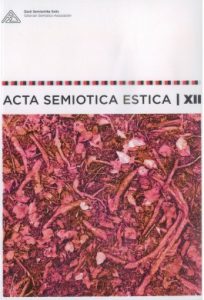Nurjumise visualiseerimine Eesti kunstis 1987–1999: võitjate põlvkond
The role of visualizing failure in Estonian art, 1987-1999: The winners’ generation
Author(s): Kristin OravSubject(s): Social Theory, Transformation Period (1990 - 2010), Sociology of Art
Published by: Eesti Semiootika Selts
Keywords: winners’ generation; Estonian art in the 1990s; discourse; ideology; failure;
Summary/Abstract: The article focuses on exploring the conditions, possibilities, and meanings of the concept winners’ generation in Estonian art in the 1990s. The term described young people in their midtwenties, who had succeeded in becoming well-off during the ideological transition in the course of the dissolution of the Soviet Union in 1991. Some of the artists who were labeled by this name had their triumph in the freedom to express ideas that did not serve the dominant discourse, that is, discourse that captured only the interests of those who had won from the period of change. The study combines Ferdinand de Saussure’s distinction between langue and parole with the principles of external exclusion by Michel Foucault. By treating ideology as an analogue of langue that has its own internal structure and semantic rules, this article claims that the new social order was constructed in the light of severe oppositions. The Soviet censorship lost its validity and got replaced by the principle of freedom. This situation presented itself as an opportunity for artists belonging to the winners’ generation to become successful via visualizing failure, thus bringing out, but also questioning, the variations within the „victorious” discourse. Their approach helped to disarticulate what had been considered natural in the society as well as propose new insight into one of the most rapturous decades in Estonia’s recent history.
Journal: Acta Semiotica Estica
- Issue Year: 2015
- Issue No: 12
- Page Range: 29-48
- Page Count: 20
- Language: Estonian

